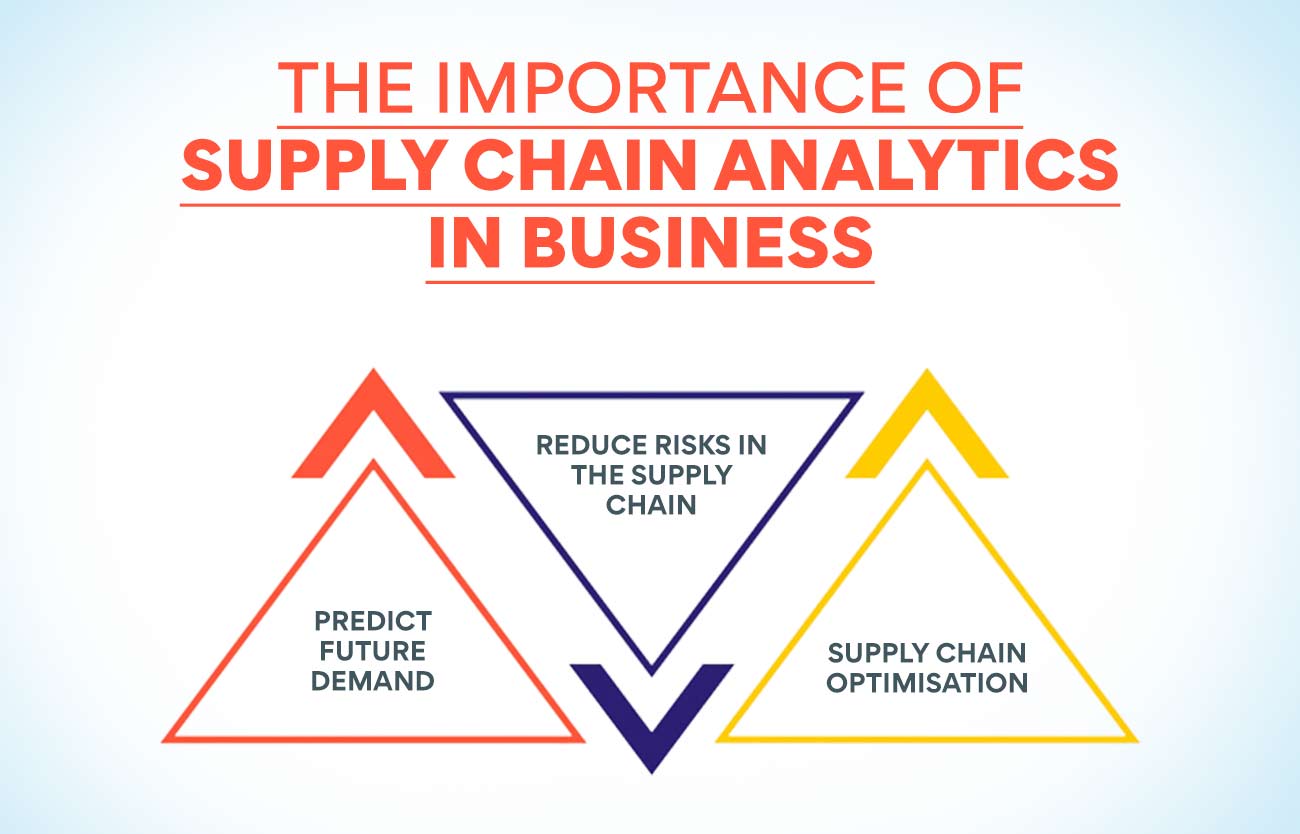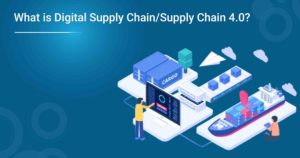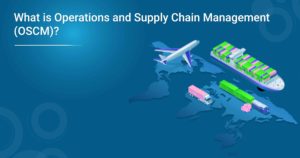The supply chain is the most prominent and important element in any business. It comprises everything from suppliers to customers. It includes all functions, from sourcing raw materials to delivery to the client. An efficient supply chain saves money and keeps customers happy. It is not easy making this process efficient as it spreads across various departments and involves a lot of people. One needs to use the most modern techniques to make the supply chain effective, and this is where supply chain analytics play a crucial role.
One can learn much about this process in the Advanced Certificate Course in Operations, Supply Chain and Project Management conducted by reputed institutions. You can visit our website to learn more about this course and how it will benefit an aspiring supply chain professional.
What Is Supply Chain Analytics?
Simply put, it is the analysis of information that the company gets from various components of the supply chain. However, it is not easy to assimilate all the data because the supply chain itself spreads among various departments. Different software packages control each of these processes. Sourcing and vendor management are done by one department, while another manages inventory and stores. In the same way, different programs control orders and deliveries. Supply chain analytics is the analysis of data drawn from all these software programs.
Each of these programs has different reporting capabilities. They may be giving various reports like predicated supplier lead times, optimum stock of goods, and the average delivery time for various customers. But supply chain analytics can be powerful if all these are integrated. ERP is one way to bring all these tasks together. It will be easier to get the information needed for analysis. It will give analysts a comprehensive view of all the reports on their dashboards. It helps them view data in real time and make decisions to prevent issues from becoming more serious.
The Importance Of Supply Chain Analytics In Business
There are various ways in which supply chain analytics can help businesses improve their performance, reduce costs and increase profits. Using real-time and historical data helps them make better and faster decisions. Here are some ways in which this process benefits companies.
Predict Future Demand
Having fewer or more stocks in hand is dangerous for any organization. When you don’t have enough material, you risk losing customers. If there is excess stock, it results in excess spending. Companies can avoid both if they can predict future demand accurately. Supply chain analytics helps in forecasting future sales using historical sales and inventory data. It will help in knowing how much inventory the firm should ideally hold to keep customers satisfied without overstocking. It also helps in keeping an adequate amount of raw materials.
Reduce Risks In The Supply Chain
The supply chain that has so many different components is always prone to risk. Anything can go wrong at any moment either within your organization or at businesses that form part of your supply chain. Perfect planning is necessary to mitigate such risks and ensure that everything works smoothly. Supply chain analytics helps you with insights about what could go wrong in various areas of the supply chain. This will help you prepare for such dangers and have a solution ready at hand. This will ensure that your supplies are not affected in any way.
Supply Chain Optimisation
Using supply chain analytics helps companies optimize their supply chains. With many systems and people working in the process, there is always the possibility of inefficiencies creeping in. It means that the company will be spending more money on its operations. Finding out the areas where there is a chance for improvement can make the process more efficient. An efficient supply chain reduces costs and ensures customer satisfaction. Analytics helps find employees that need to work more efficiently and provides them with the necessary support to match others in their capabilities.
Also Read: Objectives Of Supply Chain Management Explained
Types Of Supply Chain Analytics
Modern technology and access to real-time data make the possibilities of analyzing almost endless. Companies use five common types of analytics to improve the efficiency of their supply chain.
- Descriptive Analytics
This type of supply chain analytics uses historical data to make better decisions. For example, a company can look at what products sold less or more during a particular period. It helps them plan their production accordingly and maintain optimum stocks. It is possible to find patterns in almost all historical data that help supply chain managers plan various activities properly. Companies can also find products that are too slow-moving to earn any profits. They can then decide whether to discontinue the item or make changes to improve its sales.
- Predictive Analytics
As the name suggests, this is the type of supply chain analytics where experts use historical data, machine learning techniques, and statistical algorithms to predict various events. It allows companies to forecast events that can disrupt supply chain activities accurately. One example of predictive analytics is the use of historical inventory data for reordering items. They can analyze the information and decide exactly when they should reorder an item to ensure optimum stocks in the warehouse. This will prevent both less and more stocking, ensuring customer satisfaction and cost saving.
- Prescriptive Analytics
In this type of supply chain analytics, the data experts use massive amounts of data to arrive at decisions that help make the best strategic move in the business. Companies that have been executing orders themselves may want to outsource the work to a 3PL company to save costs and improve efficiency. But they must do it at the right time so that the business doesn’t suffer, nor are customers affected by it. Prescriptive analytics helps to find the apt moment when the company can make the shift to outsourcing order fulfillment.
- Cognitive Analytics
Most companies wish that there was a program that could think like humans and make decisions. Cognitive analytics helps to do that. But this type of supply chain analytics requires a huge amount of data to draw insights from. This technology uses machine learning and artificial intelligence to make decisions with proper reasoning. E-commerce companies can have better visibility of their supply chains using AI. Those companies that have used AI have reported a massive improvement in earnings and a reduction in costs.
- Diagnostic Analytics
It is a type of supply chain analytics that looks at historical data and tells companies why an event has occurred. It helps greatly in finding out reasons for mistakes, errors, and delays in the supply chain. Diagnostic analytics helps companies find out why there are shipment delays and procurement disruptions. This helps to take corrective steps and ensure that such events don’t repeat. Every improvement in the supply chain operations leads to cost reduction and increased profitability.
It is possible to get a deep knowledge of the various types of analytics and how they are used to optimize the supply chain in the Advanced Certificate Course in Operations, Supply Chain, and Project Management. A visit to our website can enlighten you more about this course.
In this ever-evolving world, don’t forget to learn AI in Supply Chain Course for career advancement.
How To Use Supply Chain Analytics To Get The Best Benefits?

Be Connected To All Data
The success of supply chain analytics depends on the amount and accuracy of data used for analysis. The information must also be available on a real-time basis if the exercise must help in making smart decisions. It means that all the analytics experts must be able to access all supply chain data without any obstacles. In some cases, the data needs to be collected from various places and moved to a data sheet for analysis. This could result in a waste of time. So, the first thing to ensure is that all data is connected and easily accessible.
Gather Customer Sentiments
The main aim of performing supply chain analytics is to ensure that the company provides the best experience to its customers. To ensure this, one needs to know what the customer thinks about the firm’s supply chain management and deliveries. Companies can easily gather this information from social media platforms where clients exchange opinions about products and services. Such information will help to optimize the supply chain to improve customer satisfaction. It will also help in forecasting sales as people express their intent to buy something on their social media accounts.
Visualise Data For Better Utilisation
Supply chains produce a huge amount of data, and it may become difficult to digest all the information. It is better to be able to visualize the data using a visualization tool. It becomes easy to interpret data when you get an overview of it. Making connections and assumptions also becomes easy. Sharing the simpler data with the team for analysis makes it easy for you to make improvements. Some of the tools provide a view of tables and charts that tell you how the supply chain is performing and what optimization needs to be done.
Get Location Specific Insights
One of the challenges in supply chain management is that the operations are spread across various locations. It will be beneficial to get location-specific insights from your supply chain analytics. It will help to know how each location is performing and what challenges they are facing. It will be easier to arrive at specific solutions for a location that may not apply to others. An inventory distribution based on where the company’s customers are located will help to reduce delivery time and enhance client satisfaction.
Predictive Analytics Helps Optimise Inventory
Managing inventory with cost saving is a tough job unless you can predict the demand accurately. Forecasting is never fully correct, but it does provide the information needed for maintaining the optimal inventory. Predictive analytics can help forecast demand and help you maintain only the necessary stocks. This will help in saving cost and space in warehouses. Information on daily sales, production lead times, and receiving turnaround times help to forecast demand in a better way. These insights will help to set automatically e-order quantities and streamline the inventory restocking process.
Now that we have seen how you can use supply chain analytics to make your supply chain more efficient, it is time to look at the benefits a business gets from this process.
Also Read: What Is The Scope Of Operations Management?
Benefits Of Supply Chain Analytics
Reduced Inventory Costs
Both raw material and finished goods inventory costs money to the company. Using supply chain analytics, it is possible to forecast demand accurately and optimize the inventory. Companies normally use historical data to predict future sales and stock goods on this basis. But this doesn’t take into consideration future changes in the market. It is possible to make accurate forecasts about future demand for the product using predictive analytics. It will help the company to reduce or increase the inventory level and ensure that all orders are executed while there is no overstocking.
Optimization Of Production Plans
It is not just inventory that is affected by fluctuations in market demand. Production plans are also affected by disruptions in the market. Using traditional methods, it is not possible to plan for such events. This can result in either producing too much material or too few items. Both situations are harmful to the business. While predictive analytics tells you what the demand will be in the future, prescriptive analytics can also give solutions to tackle disruptions in the market. Such supply chain analytics can provide the ideal production plan for either real or hypothetical changes in market conditions.
Improve Logistics Operation
Logistics is a critical part of supply chains. It will also involve outside agencies, and many issues can delay the delivery of goods. Supply chain analytics can improve logistics operations by being more responsive. Prescriptive analytics can analyze the present transport network and find areas for improvement. It will help in reducing delivery time and cost. Using the sales forecast provided by predictive analytics, you can plan your transport arrangements to ensure the timely delivery of goods. The company can also reroute disrupted shipments using analytics.
Improves Cross-Functional Collaboration
A supply chain consists of various components, which means many people are involved in the process. We saw how supply chain analytics improves efficiency in different sections of the chain. Apart from this, this process also helps in better collaboration between disparate teams. If the production team expects more demand and the transport team doesn’t have this information, it will result in the non-availability of vehicles to move goods. With analytics, all teams have better visibility and can get on the same page and solve issues.
Knowing the benefits can prompt supply chain officials to implement this process in their organization. To learn more about it, one can join the Advanced Certificate Course in Operations, Supply Chain and Project Management. Our website will provide all the details you wish to know about this course.
Challenges In Implementing Supply Chain Analytics

- Time, Effort, And Cost
The cost involved in installing the necessary software packages for analytics can be the biggest deterrent for many companies to implement this process. The technology for supply chain analytics is expensive to maintain. As the results are not immediate, many officials may find it difficult to convince the management to spend such a huge amount. Standalone software packages for analytics are difficult to program. In many cases, these may not properly integrate with the existing technology in the organization. Those provided with ERP can be used only in their ecosystem. Our AI Supply Chain Management course will help professionals sort out those issues. Enroll today!
- Lack Of Experts
Supply chain analytics need experts to perform the task. This is true whether you are using standalone software or a program that is part of a bigger software package. Such experts don’t come cheap. You can either train your employee in this technique or hire someone who is an expert in analytics. In both cases, the company has to invest, and the results don’t come immediately. This is a dilemma for most companies. But not performing analytics can put your supply chain behind while the other departments are surging forward to meet the organization’s goals.
- Data In Different Formats And Silos
There are different types of data in a supply chain. There is master data that enables business processes. Then there is transactional data like purchasing and sales figures. Apart from these two, there is unstructured data from IoT sensors. These data are not available in one place. They sit in various software programs like CRM or WMS and various other repositories. Typically these don’t communicate with each other. Before beginning supply chain analytics, it is essential to bring all these together and achieve end-to-end visibility. This is a real challenge for most organisations.
Conclusion
Implementing supply chain analytics can be highly challenging. But the benefits that it provides to the company far outweigh the obstacles. All it needs is a supply chain manager who can take up the challenge and a management that will spend the money for it. Logistics managers who have completed modern courses in the subject know the significance of this process and will strive to perform the exercise. Once the benefits start showing everyone is sure to see how necessary it is to perform the analysis.
More Information:
What is Green Supply Chain? An Overview
Green Supply Chain Management: What It Is and Why It Matters?



























